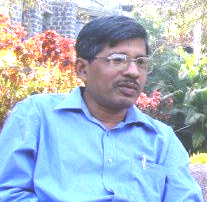
Dr. Prakash Chandra Pradhan
The Odia women are traditionally inclined to observe a number of Vratas that give them a lot of peace of mind and satisfaction. A few of them are Sudasa Vrata, Sabitri Vrata, Santoshima Vrata, Srikrishna Janmastami Vrata, Somanath Vrata and so on. In the past the Odia society accepted such Vratas without questioning their relevance. By the passage of time, a number of social changes have now taken place. As a result, the so-called modern Odias, acquainted with Western ideas and ideologies, are often perplexed; and therefore question the credibility and the relevance of such Vratas observed by their mothers, sisters and wives as well. TO every society, traditional rituals are of immense significance. Sometimes, these Vratas are observed ritually; however a close interpretation of these rituals observed in these Vratas would help us understand a society in the right perspective. It is true that Vratakathas are didactic texts that are meant to teach the devotees how to observe ritual fasts and worship individual deities .These texts contain detailed instructions for worship and provide a katha [story] whose message explains why the deity should be worshipped, and what boons the deity the deity can grant or withhold.

In this context, it seems pertinent to discuss the modalities in some of the popular Vratas observed by Odia women. Sudasa Vrata is the most popular among these women .They observe this Vrata with sincere devotion and much sincerity. Do they worship the deity Lakshmi to possess “Dhan, Jan, Gopa, Lakshmi”? Though Lakshmi is not a localized goddess of the Odias her role in Odia Lakshmi Purana is slightly different from her role as portrayed in Vedas and Puranas. Balaram Das’s Lakshmi Purana is a multidimensional text in which the Lords were not only punished for their discriminatory attitude and patriarchal bias, but they were also taught that women’s activities at home such as cooking and cleaning , feeding and caring for others have significant values for sustaining the domestic world. The “Nari-purusha” relationship is not to be based on “one-up-one- down” domain; it should rather be premised on equal basis. “A wife is not a shoe that adorns a husband’s foot”, as Balaram proclaims. Lakshmi challenges such a proposition and firmly tells her maids that if the Lord treats his wife in such a way, then the ordinary man in Kali Yuga will naturally denigrate the roles of women to a significantly low status. A careful reading of Lakshmi Purana reveals that the Lords are not adequately equipped to manage without a “gharani” [wife].Similarly, this text also emphasizes that women should be particular about their specific role of taking the domestic responsibility of service, hospitability and care for all. However such responsibility of women should not be considered to be “servility”. The text is relevant to the modern society because “worship” without “mindful duty” to home has no meaning. Both men and women should realize that there are inherent values and dignity in the household work of women to sustain the domestic world. In the crisis-ridden modern society, a proper understanding of Lakshmi purana will enable such a society for reestablishing the firm relationship between men and women through their mutual respect for each other. It is therefore important to note that Sudasavrata is not ritualistic; it is rather a worship that inculcates the spirit of humanity and love for all. It also establishes that woman’s work at home is to be recognized by men as it brings life and peace to the family. Such a fundamental thing is very crucial to discipline and strengthen the Odia society that has derailed significantly due to confused inclinations.

We may refer to another important Vrata observed by Odia women to further illustrate our viewpoint. Savitri Vrata has also contemporary relevance like Sudasa Vrata. Lord Srikrishna tells the virtuous King Yudhisthira that Savitri Vrata ,observed by women , results in yielding a lot of benefits to them for living happily with their husbands and children without wants, sorrows and sufferings. Such a Vrata is aimed at keeping the husband away from danger. An analysis of the Savitri Vrata katha reveals that women are able to bring in significant changes at their home front through sacrifice and resolute attitude to certain convictions and notions. Sometimes, it is assumed that woman is weak- Abala for which she needs a man for her sustenance. In fact, it is not based on strong grounds. From time immemorial, women have shown their great courage and resolute attitude in the different spheres of life. Both history and mythology can give us hundreds of illustrations. Savitri Vrata is quite relevant to the modern Odia society because it also focuses on man-woman relationship in the proper perspective. Here too, woman is at the centre. It is the journey of Savitri, not the journey of Satyavan. Through her determination and sacrifice Savitri has been able to transform the impossibility into a possibility . It is true that a woman can not bring back life of a dead husband. . But the thing is that a woman, through her service, sacrifice and commitment, can enliven a dead home, decayed due to circumstances.
It is therefore important to understand the significance of the Vratas observed by the Odia women. They should not be dismissed as superstitious, irrelevant and futile. Understood in their proper perspectives, these Vraras can bring in proper order and discipline to the society as thy focus on man-woman relationship which is the burning issue of the day in all societies.